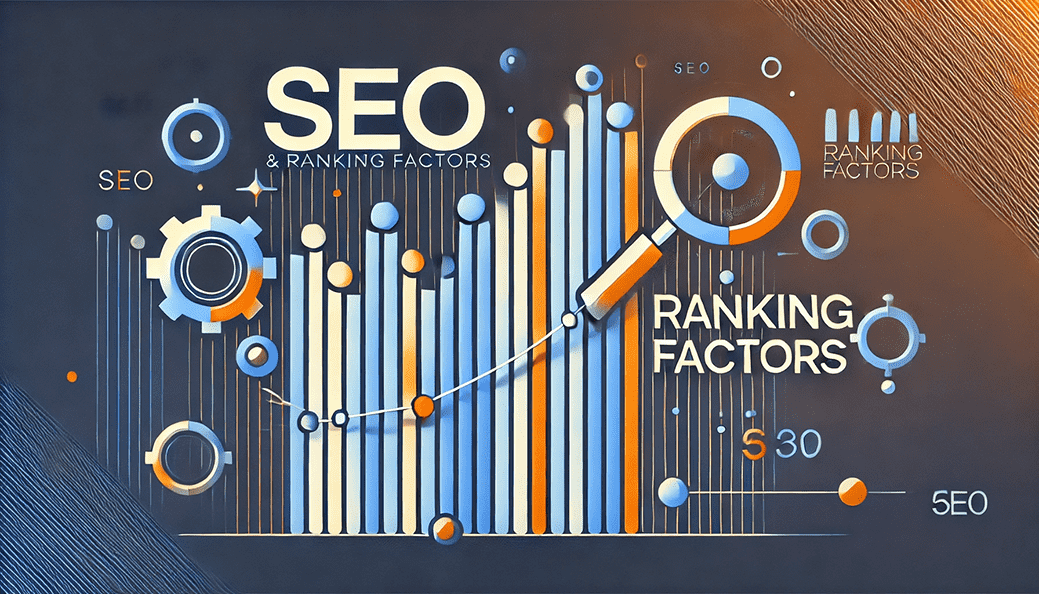
______________________________
In the ever-evolving world of SEO, understanding how different factors influence rankings can set your website apart. From the number of pages on your site to its domain age, each factor contributes uniquely to search engine visibility. Here, we explore simulated graphs that illustrate these critical SEO elements and how they impact rankings.
1. Number of Pages vs. Ranking Position
The first graph we analyzed shows that websites with more pages tend to rank higher. This trend reflects the benefit of having a diverse array of indexed content that can target a broader range of keywords. However, more pages alone won’t guarantee top rankings – content quality is still essential. Expanding your website with well-optimized, relevant pages can increase your chances of ranking better.
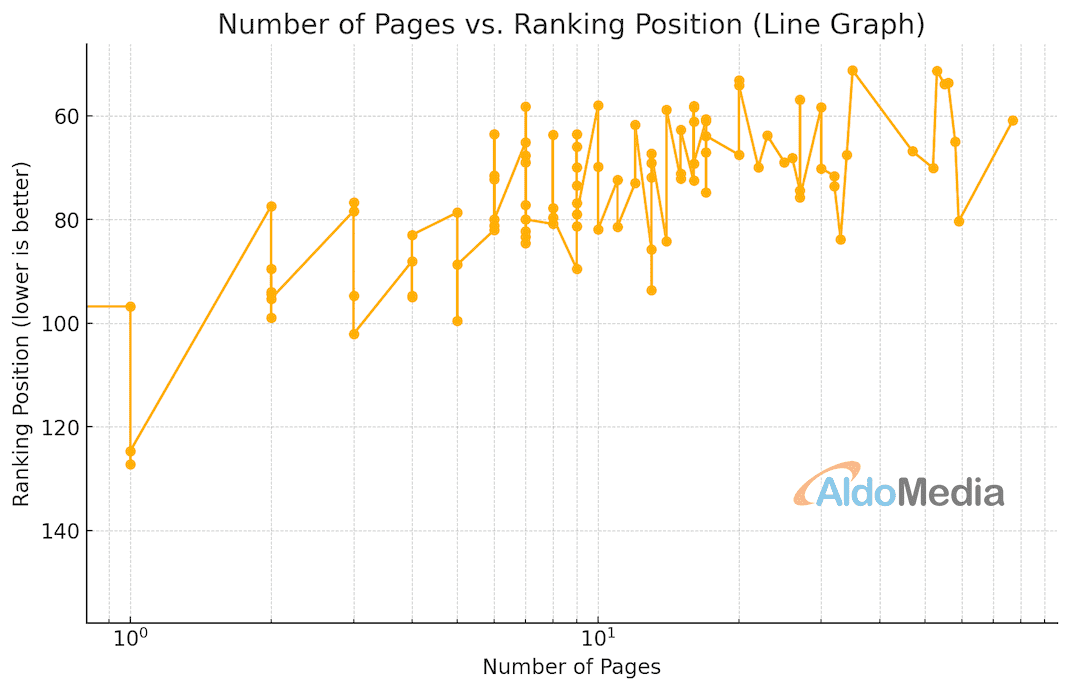
______________________________
2. Number of Backlinks vs. Ranking Position
Backlinks remain a cornerstone of SEO. Our simulation illustrates that sites with a greater number of quality backlinks generally achieve better ranking positions. Backlinks from credible sources act as endorsements, signaling to search engines that your content is authoritative. While increasing backlinks can help rankings, it’s critical to focus on high-quality links, as low-quality backlinks may even harm your SEO efforts.
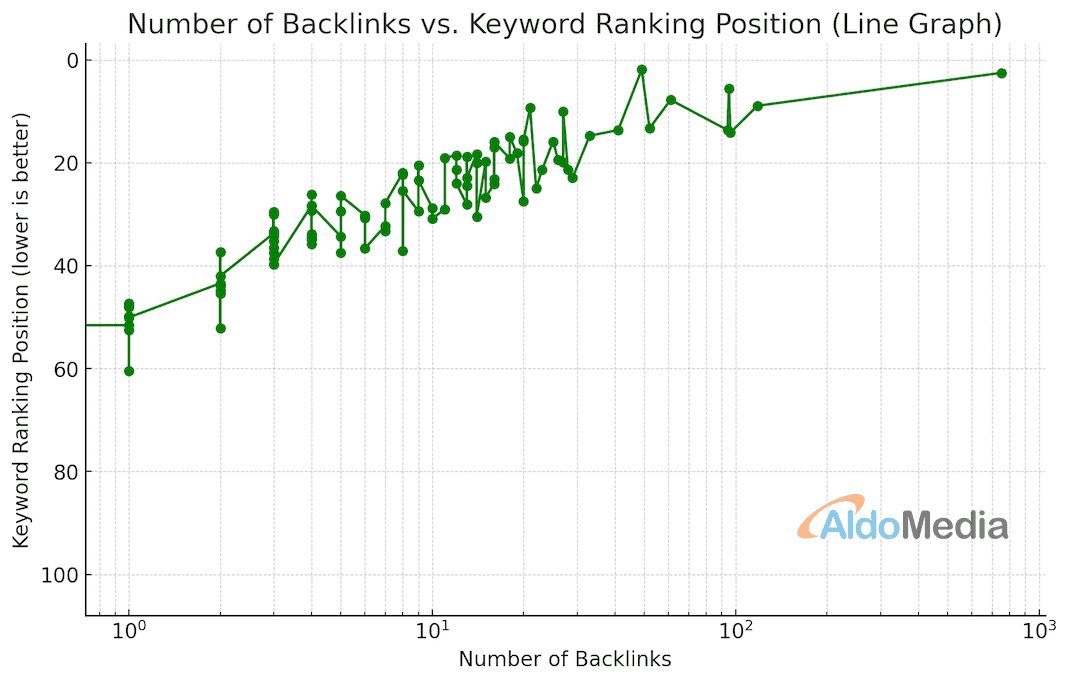
______________________________
3. Domain Age vs. Ranking Position
The age of a domain often correlates with higher rankings, as older domains may have established trust and accumulated backlinks over time. However, domain age alone doesn’t guarantee a good ranking. Our graph shows that while older domains may have a slight advantage, content quality, and authority-building are still the primary factors in SEO success.
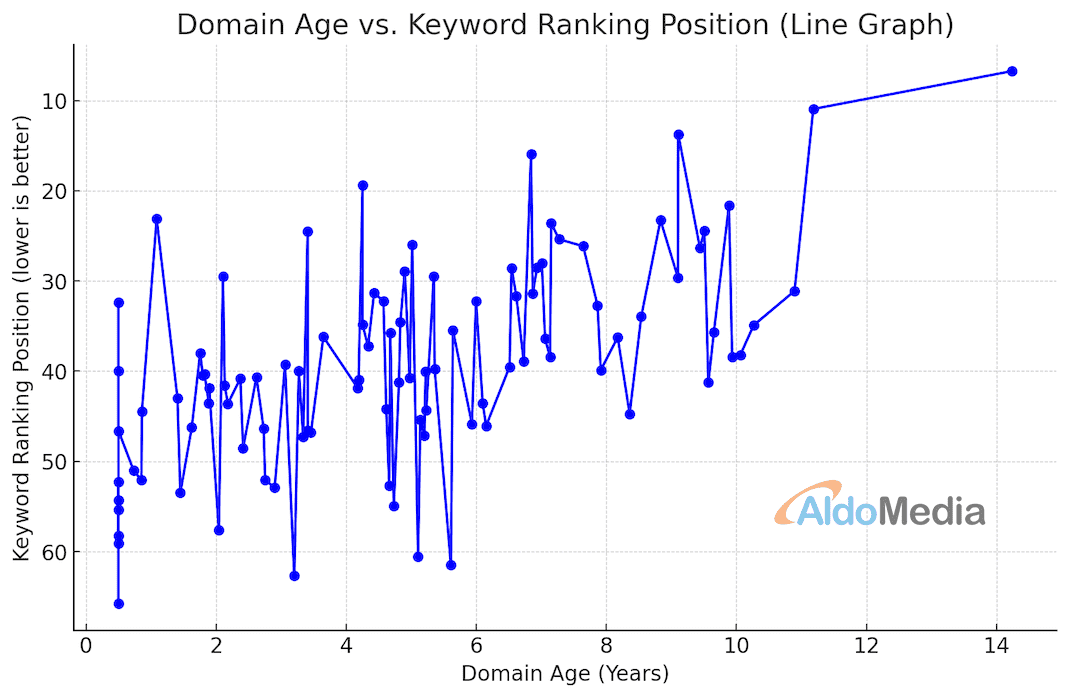
______________________________
4. Content Length vs. Ranking Position
When it comes to content, longer tends to be better. In our graph, content length correlates positively with ranking position, though with diminishing returns. This pattern suggests that while in-depth content is valuable, excessively long content that doesn’t add value may not yield further benefits. Aim to provide comprehensive, user-focused information without unnecessary filler.
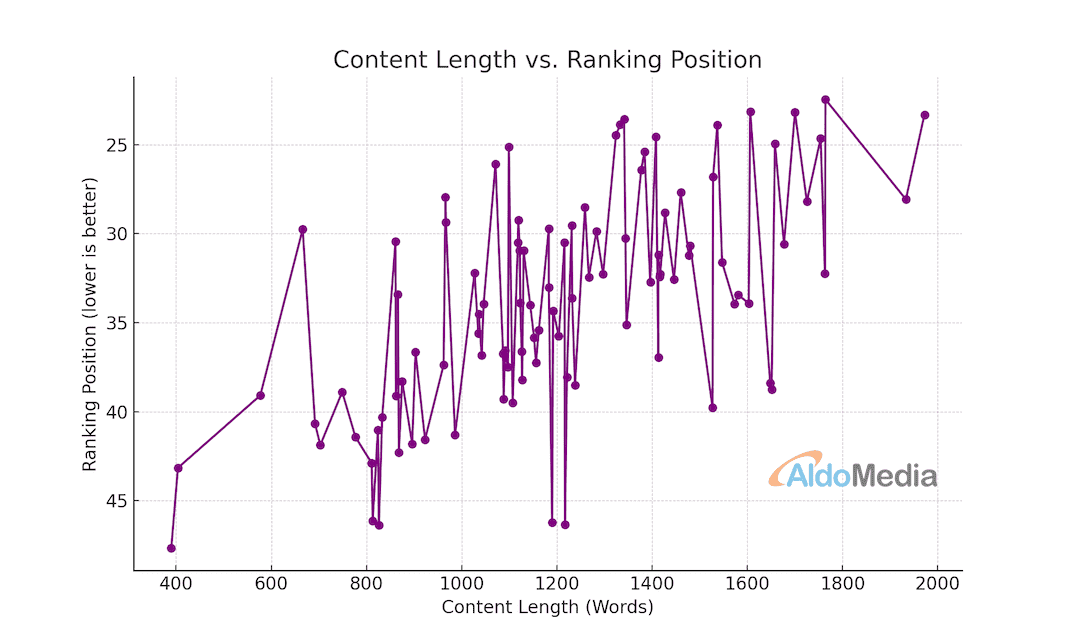
______________________________
5. Page Load Time vs. Ranking Position
Page speed is vital for user experience and ranking. Faster-loading pages are often rewarded with better positions, as shown in our simulated data. To optimize page load time, consider compressing images, enabling browser caching, and minimizing JavaScript. A quicker website provides a better experience for users, particularly mobile users, who expect speedy access to information.
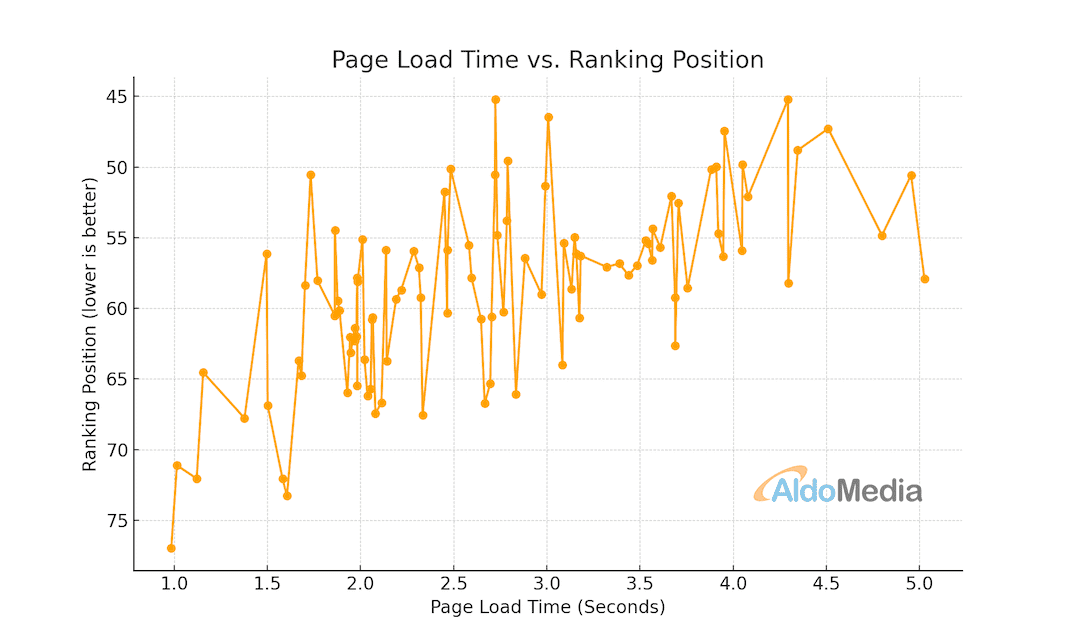
______________________________
6. Click-Through Rate (CTR) vs. Ranking Position
Higher-ranking pages typically enjoy higher click-through rates (CTR), as reflected in our CTR vs. ranking graph. Crafting compelling meta titles and descriptions can increase CTR, even for lower-ranking pages, signaling relevance to search engines. Improving your CTR is especially impactful for pages positioned on the second or third pages of search results, as it can drive incremental traffic and potentially improve ranking over time.
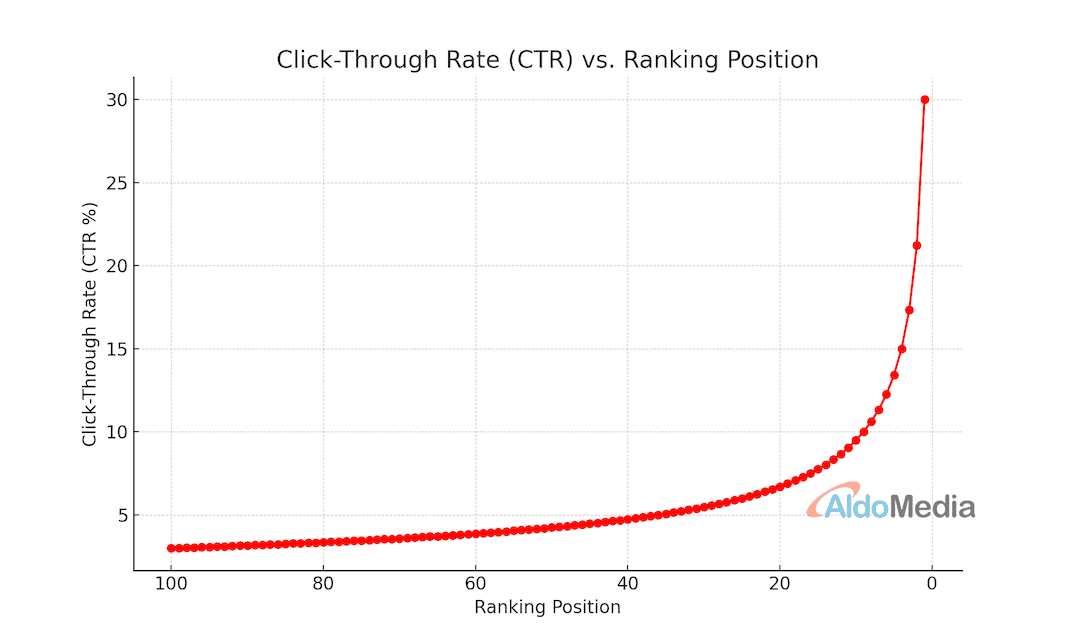
______________________________
7. Bounce Rate vs. Ranking Position
Bounce rate, or the percentage of users who leave a site after viewing a single page, can provide insight into user satisfaction. Our data suggests that lower-ranked pages tend to have higher bounce rates. Reducing bounce rate is often about enhancing content relevance and improving user experience. Tactics like refining page layouts, adding internal links, and ensuring mobile-friendliness can help retain users.
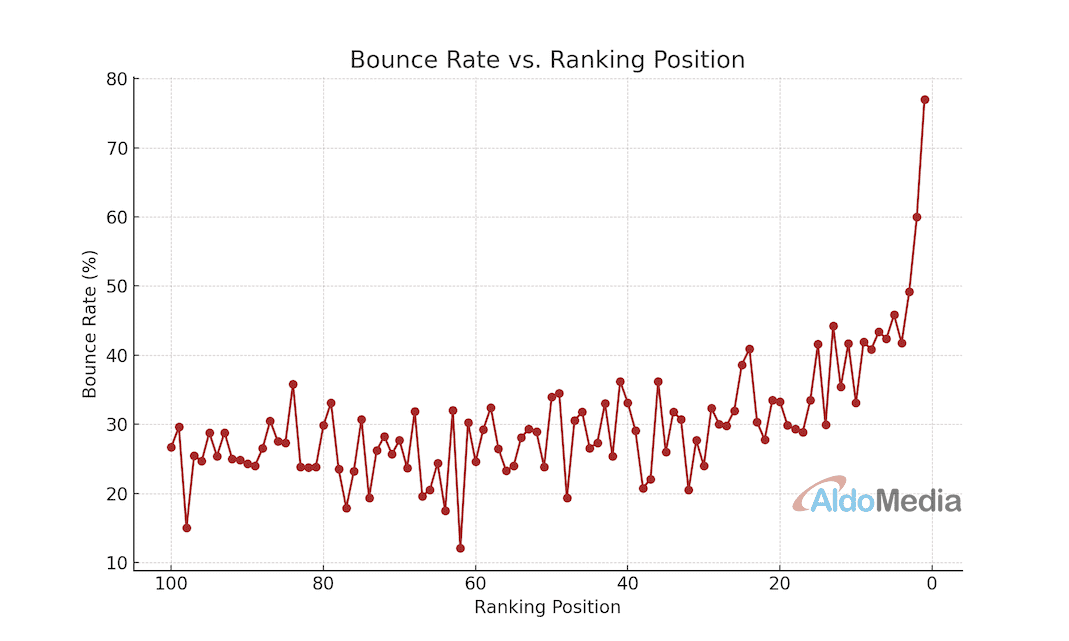
______________________________
8. Domain Authority vs. Ranking Position
Domain authority (DA) is another major factor. Websites with higher DA scores tend to rank better, as DA reflects a site’s backlink profile, content quality, and overall credibility. Our graph shows that sites with higher DA generally secure better positions in search results. Consistent quality content, effective link-building, and maintaining a positive online reputation are essential for increasing DA.
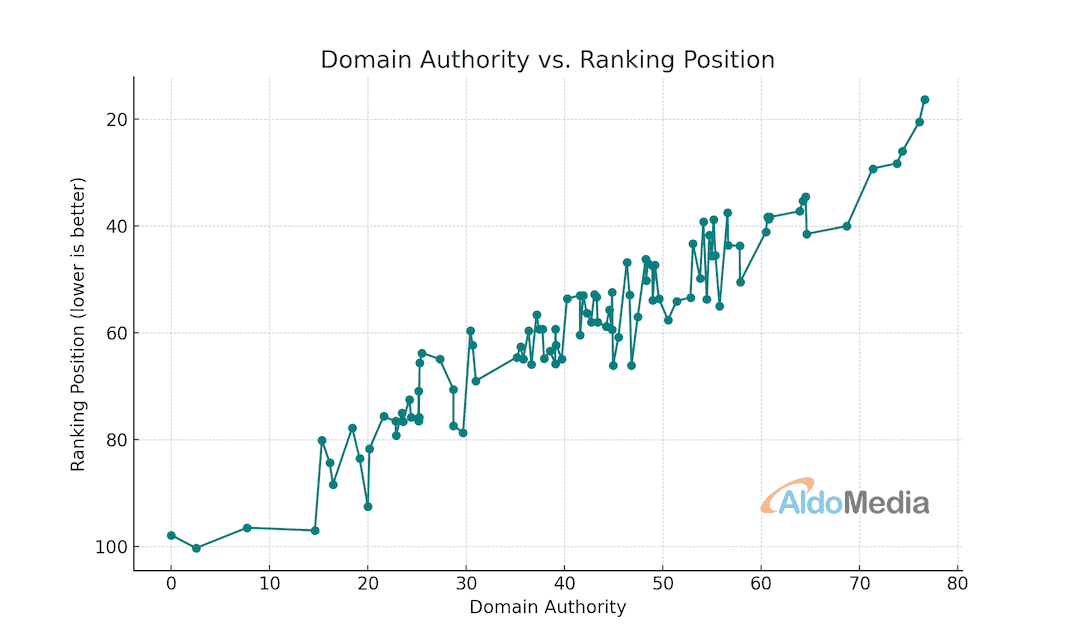
______________________________
9. Keyword Difficulty vs. Ranking Position
The level of competition for specific keywords, represented by keyword difficulty, also affects ranking. Higher difficulty keywords often correlate with lower ranking positions unless extensive SEO efforts are made. To improve ranking for high-difficulty keywords, prioritize quality content and authoritative backlinks.
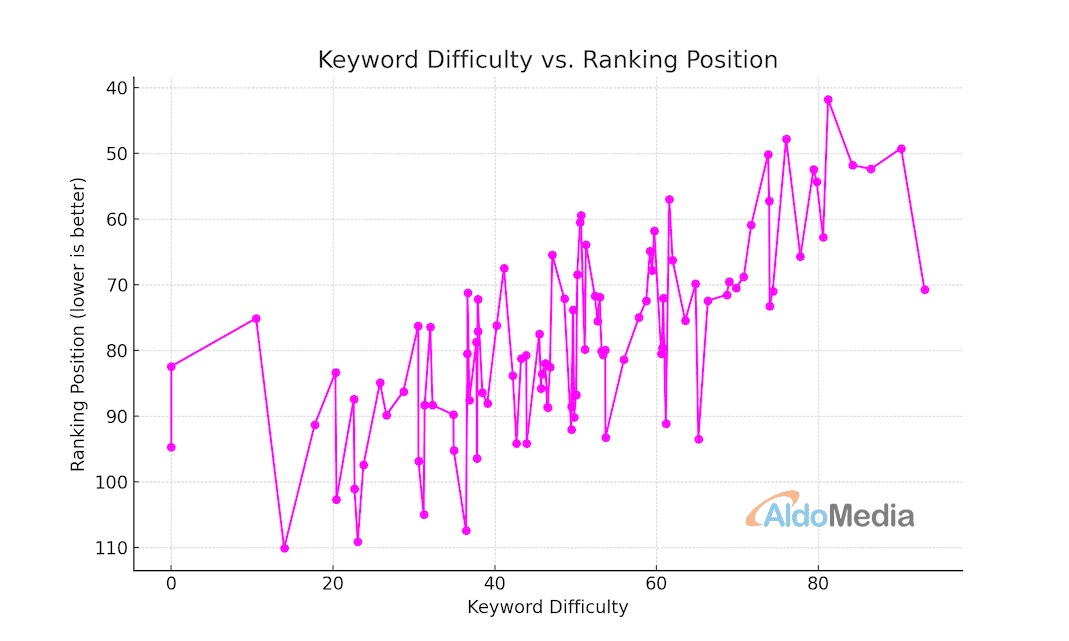
______________________________
10. Mobile-Friendliness Score vs. Ranking Position
Mobile-friendliness is non-negotiable in today’s SEO landscape. Our graph illustrates that websites optimized for mobile devices tend to rank higher. Google’s mobile-first indexing favors sites with responsive designs and quick load times. Ensuring your website is fully accessible on mobile devices will support your overall SEO efforts.
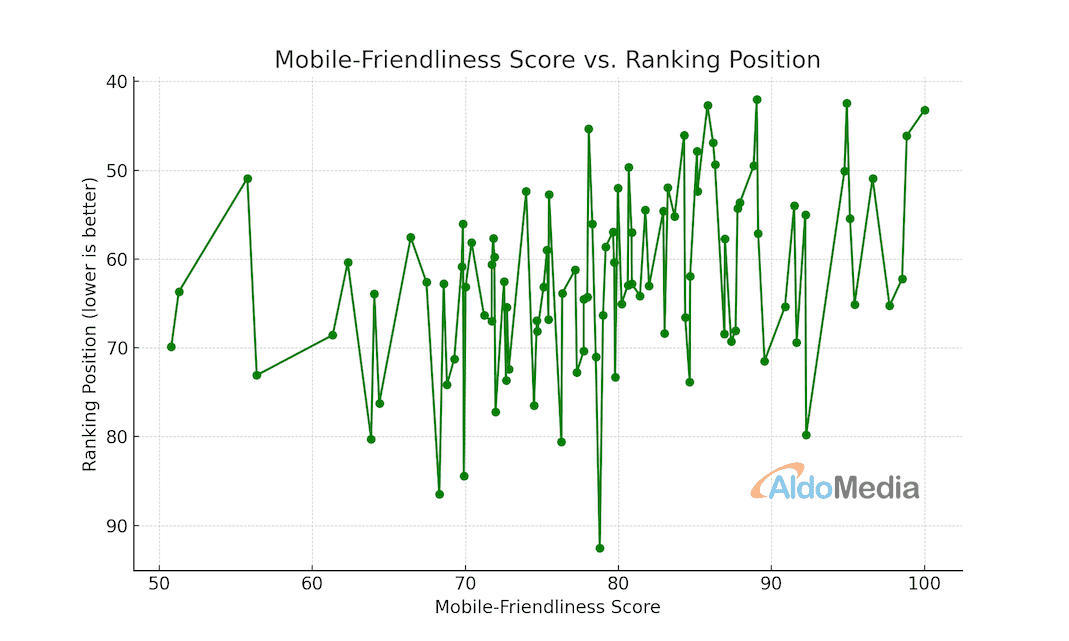
______________________________
11. Time on Page vs. Ranking Position
Lastly, time on page offers insight into user engagement. Pages that hold visitors’ attention longer generally achieve better rankings, as shown in our final graph. Adding multimedia, creating engaging layouts, and using internal links can enhance the user experience and keep users engaged longer.
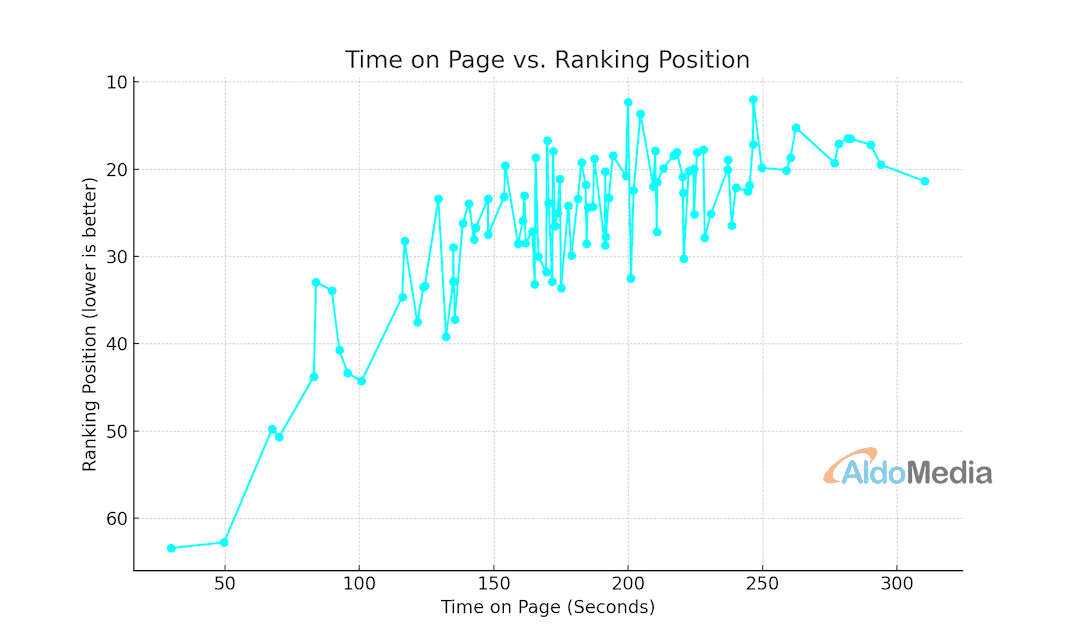
______________________________
Conclusion
These graphs illustrate that effective SEO requires a multi-faceted approach. By understanding and optimizing each factor – from content and backlinks to technical elements like page speed and mobile-friendliness – you’ll build a website that ranks well, engages users, and drives sustainable traffic.
Leveraging these data-driven insights can help refine your SEO strategy and achieve better search engine rankings. Remember, a holistic approach that combines technical SEO, content optimization, and user experience is key to long-term success.
Areas Served | Industry Specific Website Design | Privacy Policy | ADA Compliance
Copyright © 1999 - 2025 AldoMedia, LLC. All Rights Reserved.
